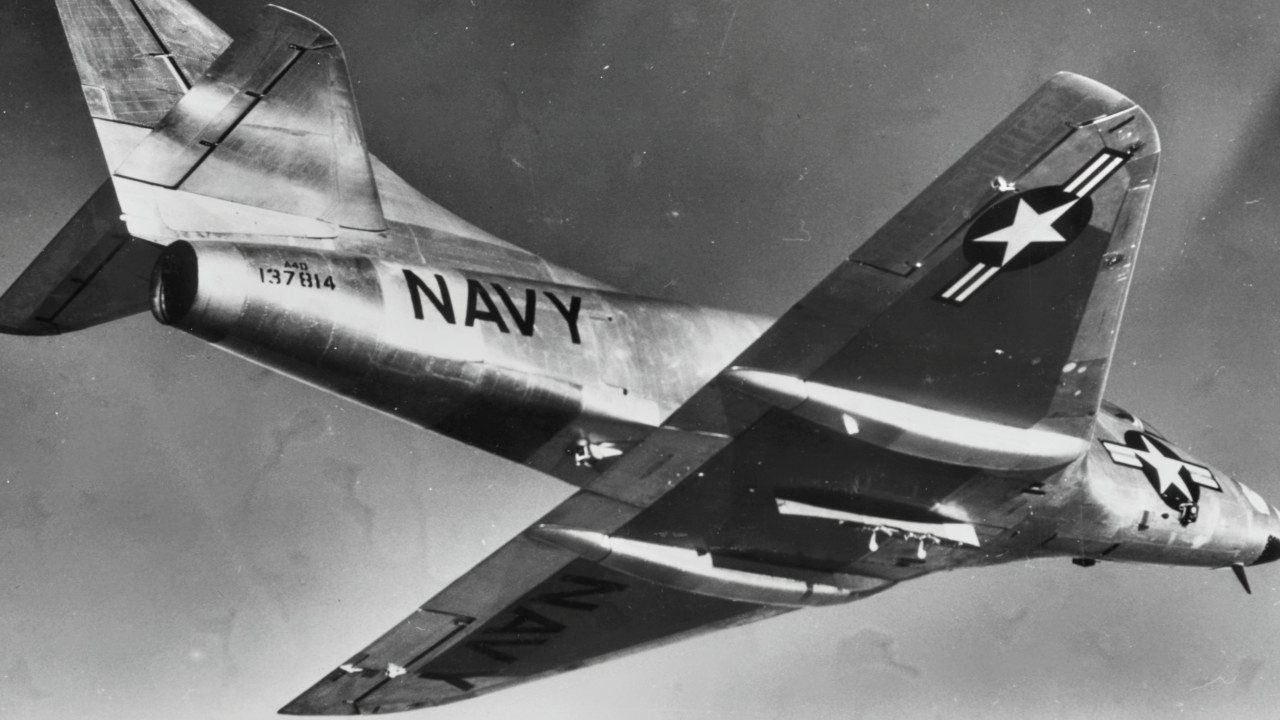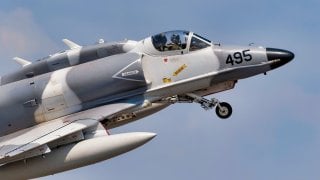Why the A-4 Skyhawk Deserves a Place in Aviation History
The Douglas A-4 Skyhawk gets lost in the mix sometimes—but between 1954 and 1979, nearly 3,000 A-4s were produced, making the jet a ubiquitous Cold War staple with the U.S. Navy and U.S. Marine Corps
The Douglas A-4 Skyhawk gets lost in the mix sometimes—but between 1954 and 1979, nearly 3,000 A-4s were produced, making the jet a ubiquitous Cold War staple with the U.S. Navy and U.S. Marine Corps.
Even today, a few A-4s are still in service with the Argentine Air Force and the Brazilian Navy.
But the venerable A-4 is not remembered as prominently as other Cold War staples, successfully supplanted after the arrival of the F-14 Tomcat and F/A-18 Hornet.
Remembering the A-4 Skyhawk
The A-4 can be seen in the epic film The Right Stuff, when Al Shepphard lands an A-4 on an aircraft carrier before being recruited to join NASA. The jet is handsome and hearty, a single-seater built for a light attack role.
Built in the 1950s as a replacement for the Douglas A-1 Skyraider (coincidentally the last propeller-driven attack aircraft in the U.S. inventory, and coincidentally the base platform for the A-10 Warthog), the A-4 was compact, simple, and lightweight relative to its contemporaries. The jet’s maximum takeoff weight was just 24,500 pounds—about half of the Navy’s weight specifications. The jet featured a short-span delta wing, a tricycle undercarriage, and a single turbojet engine.
The delta wings were so compact that they did not even need to be folded for carrier stowage. The aircraft was so small that it received nicknames like “Scooter,” “Kiddie Car,” “Bantam Bomber,” and “Tinker Toy Bomber.” But the A-4 received another, more flattering, nickname on account of the jet’s speed and maneuverability: “Heinemann’s Hot Rod” (Heinemann being the A-4s designer).
The A-4’s five hardpoints permitted a variety of ordnance, including missiles, bombs, and other munitions. Despite being small and compact, the A-4 could carry a bomb load similar to that of the Boeing B-17 Flying Fortress, which flew with a crew of ten men.
The A-4 could even be outfitted to handle a nuclear payload; with a low-altitude bombing system and a “loft” delivery technique, the A-4 could drop a nuclear weapon if needed. The A-4 could be outfitted with a thermal cockpit shield to protect the pilot from nuclear radiation.
Perhaps the A-4’s most meaningful contribution to military aviation is the introduction of the “buddy” air-to-air refueling system, which allowed aircraft to refuel one another mid-flight without the need for dedicated aerial tankers.
The technique proved to offer a notable advantage for small air arms, or for aircraft operating in remote locations, vastly improving operational flexibility and adding a redundant feature. To implement the concept, a designated fuel supply A-4 would be mounted with a center-mounted “buddy store,” which was a large external fuel tank with a hose reel in the aft section and an extensible drogue refueling bucket.

Typically, A-4s would be loaded with ordnance before a mission—which meant that to meet the Navy’s takeoff requirements, the jet had to be launched without a full tank of fuel. So, Standard Operating Procedure was to launch a refueler A-4 along with the ordnance-loaded A-4s, which would then slurp up a full tank of fuel just after their launch from the carrier.
About the Author: Harrison Kass
Harrison Kass is a defense and national security writer with over 1,000 total pieces on issues involving global affairs. An attorney, pilot, guitarist, and minor pro hockey player, Harrison joined the US Air Force as a Pilot Trainee but was medically discharged. Harrison holds a BA from Lake Forest College, a JD from the University of Oregon, and an MA from New York University. Harrison listens to Dokken.


